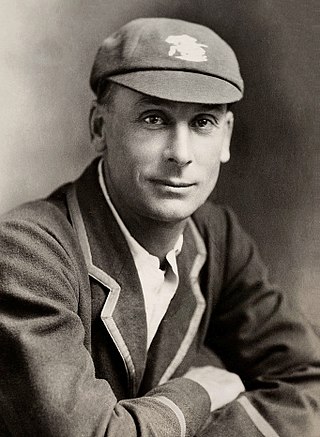
Sir John Berry Hobbs, always known as Jack Hobbs, was an English professional cricketer who played for Surrey from 1905 to 1934 and for England in 61 Test matches between 1908 and 1930. Known as "The Master", he is widely regarded as one of the greatest batsmen in the history of cricket. He is the leading run-scorer and century-maker in first-class cricket, with 61,237 runs and 197 centuries. A right-handed batsman and an occasional right-arm medium pace bowler, Hobbs also excelled as a fielder, particularly in the position of cover point. Hobbs was named as one of the five Wisden Cricketers of the Century alongside Sir Donald Bradman, Sir Garfield Sobers, Shane Warne, and Sir Viv Richards.

Graham Alan Gooch, is a former English first-class cricketer who captained Essex and England. He was one of the most successful international batsmen of his generation, and through a career spanning from 1973 until 2000, he became the most prolific run scorer of all time, with 67,057 runs across first-class and limited-overs games. His List A cricket tally of 22,211 runs is also a record. He is one of only twenty-five players to have scored over 100 first-class centuries.
An innings is one of the divisions of a cricket match during which one team takes its turn to bat. Innings also means the period in which an individual player bats. Innings, in cricket, and rounders, is both singular and plural; this contrasts with baseball and softball in which the singular is "inning".

John Barton "Bart" King was an American cricketer, active in the late 19th and early 20th centuries. King was part of the Philadelphia team that played from the end of the 19th century until the outbreak of World War I. This period of cricket in the United States was dominated by "gentlemen cricketers"—men of independent wealth who did not need to work. King, an amateur from a middle-class family, was able to devote time to cricket thanks to a job set up by his teammates.

Mark Ravin Ramprakash is an English former cricketer and cricket coach.

Ian David Craig was an Australian cricketer who represented the Australian national team in 11 Tests between 1953 and 1958. A right-handed batsman, Craig holds the records for being the youngest Australian to make a first-class double century, appear in a Test match, and captain his country in a Test match. Burdened by the public expectation of being the "next Bradman", Craig's career did not fulfil its early promise. In 1957, he was appointed Australian captain, leading a young team as part of a regeneration plan following the decline of the national team in the mid-1950s, but a loss of form and illness forced him out of the team after one season. Craig made a comeback, but work commitments forced him to retire from first-class cricket at only 26 years of age.
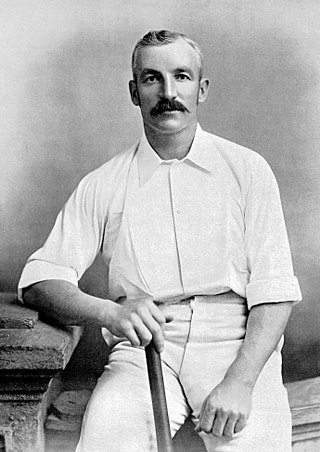
George Giffen was a cricketer who played for South Australia and Australia. An all-rounder who batted in the middle order and often opened the bowling with medium-paced off-spin, Giffen captained Australia during the 1894–95 Ashes series and was the first Australian to score 10,000 runs and take 500 wickets in first-class cricket. He was inducted into the Australian Cricket Hall of Fame on 26 February 2008.

Thomas Walter Hayward was an English first-class cricketer who played for Surrey and England between the 1890s and the outbreak of World War I. He was primarily an opening batsman, noted especially for the quality of his off-drive. Neville Cardus wrote that he "was amongst the most precisely technical and most prolific batsmen of any time in the annals of cricket." He was only the second batsman to reach the landmark of 100 first-class centuries, following WG Grace. In the 1906 English season he scored 3,518 runs, a record aggregate since surpassed only by Denis Compton and Bill Edrich in 1947.

Lionel Charles Hamilton Palairet was an English amateur cricketer who played for Somerset and Oxford University. A graceful right-handed batsman, he was selected to play Test cricket for England twice in 1902. Contemporaries judged Palairet to have one of the most attractive batting styles of the period. His obituary in The Times described him as "the most beautiful batsman of all time". An unwillingness to tour during the English winter limited Palairet's Test appearances; contemporaries believed he deserved more Test caps.

Roy Kilner was an English professional cricketer who played nine Test matches for England between 1924 and 1926. An all-rounder, he played for Yorkshire County Cricket Club between 1911 and 1927. In all first-class matches, he scored 14,707 runs at an average of 30.01 and took 1,003 wickets at an average of 18.45. Kilner scored 1,000 runs in a season ten times and took 100 wickets in a season five times. On four occasions, he completed the double: scoring 1,000 runs and taking 100 wickets in the same season, recognised as a sign of a quality all-rounder.

Arthur Dudley Nourse was a South African Test cricketer. Primarily a batsman, he was captain of the South African team from 1948 to 1951.
England won the 1926 Ashes series against Australia, winning the last Test of the series after the first four matches were drawn.
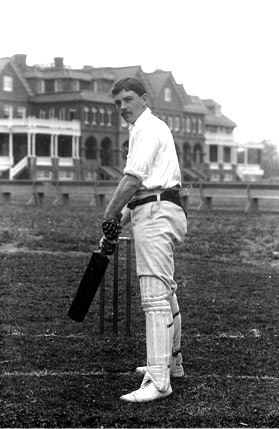
John Ashby Lester was an American cricketer, active in the late 19th and early 20th centuries, and a teacher. Lester was one of the Philadelphian cricketers who played from the end of the 19th century until the outbreak of World War I. His obituary in Wisden Cricketers' Almanack, described him as "one of the great figures in American cricket." During his career, he played in 53 matches for the Philadelphians, 47 of which are considered first class. From 1897 until his retirement in 1908, Lester led the batting averages in Philadelphia and captained all the international home matches.
Mervyn John Kitchen, is a former English first-class cricketer and international umpire. In his playing days he was a left-handed batsman for Somerset County Cricket Club, making 15,230 runs in his 354 first-class games between 1960 and 1979. He topped the Somerset averages in 1966 and 1968. After retiring as a player, he went on to become a first-class cricket umpire and he umpired in 20 Test matches and 28 One-Day Internationals before retiring from that at the age of 65 in 2005.
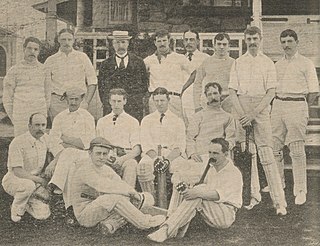
The Philadelphian cricket team toured England in the summer of 1897. Starting on 7 June at Oxford, the tour lasted for two months and ended in late July at The Oval. The Americans played 15 first-class matches captained by George Stuart Patterson.
The English cricket team in Australia in 1901–02 lost the Test series to Australia, who came from one down to win 4–1 and thus retained The Ashes. The England side was a private venture of Archie MacLaren at the invitation of the Melbourne Cricket Club, after MCC had declined to send a team. Prior to this, all Test tours of Australia had been privately organised, but MCC took over the responsibility with the following tour in 1903–4. George Hirst, Wilfred Rhodes, KS Ranjitsinjhi, Stanley Jackson and CB Fry were all unavailable.
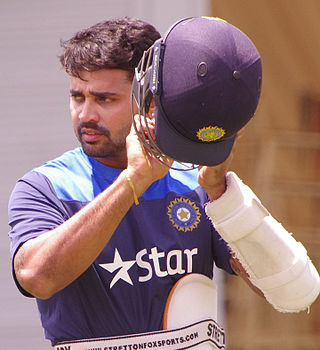
Murali Vijay is a former Indian international cricketer who plays as a right-handed opening batsman. He was a regular member of the Indian Test team until 2018 and plays for Tamil Nadu in domestic first-class cricket. Vijay was a member of the Indian team that won the 2013 ICC Champions Trophy.

Cricket is a bat-and-ball game played between two teams of eleven players on a field at the centre of which is a 22-yard (20-metre) pitch with a wicket at each end, each comprising two bails balanced on three stumps. The batting side scores runs by striking the ball bowled at one of the wickets with the bat and then running between the wickets, while the bowling and fielding side tries to prevent this and dismiss each batter. Means of dismissal include being bowled, when the ball hits the stumps and dislodges the bails, and by the fielding side either catching the ball after it is hit by the bat, but before it hits the ground, or hitting a wicket with the ball before a batter can cross the crease in front of the wicket. When ten batters have been dismissed, the innings ends and the teams swap roles. The game is adjudicated by two umpires, aided by a third umpire and match referee in international matches. They communicate with two off-field scorers who record the match's statistical information.
Ralph Raymond Kimbell was an English cricketer. Kimbell's batting and bowling styles are unknown. He was born in Boughton, Northamptonshire.
In cricket, a player's batting average is the total number of runs they have scored divided by the number of times they have been out, usually given to two decimal places. Since the number of runs a player scores and how often they get out are primarily measures of their own playing ability, and largely independent of their teammates, batting average is a good metric for an individual player's skill as a batter. The number is also simple to interpret intuitively. If all the batter's innings were completed, this is the average number of runs they score per innings. If they did not complete all their innings, this number is an estimate of the unknown average number of runs they score per innings.